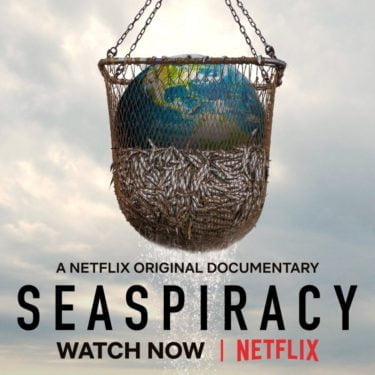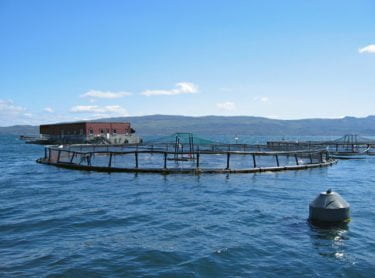The new Netflix documentary Seaspiracy has been making waves since its release a few weeks ago. It charts the global journey taken by filmmaker Ali Tabrizi to try and understand the impacts of humankind on the world’s oceans. The film has been hugely successful, hitting Netflix’s Top 10 list in many countries, including the UK. Yet despite clearly hitting a nerve with viewers, and raising legitimate concerns, those working in marine conservation and fisheries have been left disturbed by what they’ve perceived to be dishonesty present throughout the documentary.
But for those who aren’t experts in the subject matter how can you tell whether this documentary, and others like it, is accurate? Without having to wade through reams of scientific papers, what should set your spidey-senses tingling?
1) The presenter gets us to join him on a “journey of discovery”
After a dramatic teaser Seaspiracy begins by introducing us to our guide, Ali, who has had an “obsession” with the ocean since childhood, and a fascination with whales and dolphins in particular. But for someone with such a keen interest in all things marine, he seems strangely uninformed. He is unaware that whaling has continued since the International Whaling Commission (IWC) instituted a global ban in 1986, or that Japan’s leaving of the IWC may actually be a good thing. He’s also shocked to hear that:
in a place called Taiji… each year over 700 dolphins and small whales are herded into a cove for slaughter.
If that cove sounds familiar, it’s because it was the subject of a 2009 Oscar-winning documentary. We are barely 10 minutes into the film and so far everything has been presented as new and startling information despite none of it being hidden, certainly not from someone who has an lifelong “obsession” about such things. Now, this may be a framing device, but it’s one that casts our guide as just as clueless as we are.
When the person trying to educate you is equally new to the subject there is no reason for you to trust that he is guiding you correctly.
2) People who don’t want to be filmed are portrayed as hiding something
There are multiple scenes where we see people asking or even demanding that they are not filmed. These are clearly framed as meaning that these people have something to hide. After all, why would they be afraid of the cameras otherwise?
But ask yourself, if a random person with a camera came to your workplace and started filming would they be allowed to, or would they be asked to stop?
We see the filmmakers filming without permits, and filming in areas where filming is not allowed, but are supposed to think that the people asking them to stop are doing so for nefarious reasons.
When filmmakers go out of their way to generate conflict they are betraying a lack of journalistic integrity which should give you cause for concern.
3) Interviewees are asked to give simple answers to complex questions
One of the central conceits of the film is that there is a vast conspiracy of silence and collusion that keeps the fishing industry afloat, and included in this conspiracy are the very organisations who purport to protect the oceans. To support this claim we are shown several ‘gotcha’ interviews.

But what makes them ‘gotcha’ interviews? Let’s look at the interview with Jackie Nuñez from the Plastic Pollution Coalition. It starts badly, with Ali disputing Ms Nuñez’s claim that microplastics are “the main source of plastic in the Great Pacific Garbage Patch [GPGP]”. It turns out they talking about two different findings from the same study published in Nature which found that fishing nets account for 46% of the mass of the GPGP but microplastics account for 94% of the pieces of plastic. A badly phrased question and a superficial understanding of the research results in confusion and an insinuation that Ms Nuñez is downplaying the role of fishing in the generation of marine plastic pollution.
Ali then cajoles Ms Nuñez into saying that people should reduce the amount of fish they eat. Her hesitation is read as collusion with the fishing industry, rather than a recognition that this is a hugely complex issue. The fishing industry is global – as the documentary does well to explain – and as such solutions that work in one country will not work in others. It’s one thing to ask people in wealthy countries, where protein sources are varied and numerous, to stop eating fish; it’s quite another to ask people for whom the oceans are their main food source to stop fishing. And as of 2016, that was the reality for over 3 billion people. What’s more, fishing is a massive industry – in 2018 an estimated 59.5 million people worked in fisheries and aquaculture. When working at a global scale, few things are simple – and proposing that we all stop eating fish is a good example of this. It may be a simple answer, but it’s not a good one.
When people propose a “just one trick” solution for a massive and multifactorial problem, be suspicious.
The Earth Island Institute, the Plastic Pollution Coalition and the Marine Stewardship Council have all put out statements refuting the claims made about them in the documentary.
4) Statistics are misrepresented
This is arguably the hardest part for a non-expert to spot as potentially flawed. You’re presented with statistics, often accompanied by references, and it looks legitimate – so who are you to argue? You can search for sites like this one from the University of Washington which fact-checks the claims, but to decide to make that effort you need to have your spidey-senses tingling already. So what can set them off? One thing that set mine off was the reliance on newspaper headlines reporting on research rather than going directly to the source. This may simply be for more viewer-friendly headlines (scientific papers aren’t exactly known for their catchy titles), but the paucity of primary research cited suggests that the filmmakers are relying heavily on secondary sources for their information, which does not inspire confidence.
Another thing to look out for is the age of the material they are referencing. Seaspiracy’s site now has references to their research, but many of the sources are over 5 years old, and in the fast-paced world of science that means many are out of date. And that’s assuming the filmmakers have accurately reported on the science, which in at least two cases they have not.
The most egregious case is one that had every fisheries scientist rolling their eyes – the claim that “we will see virtually empty oceans by the year 2048”. This claim is based on a paper that has been refuted by its own authors. It is simply not true. A less egregious claim, but one possibly easier for the non-expert to fact check, is that fish are full of industrial pollutants. The newspaper headline accompanying this claim is an article from CBS published in 2016 which notes not only that contaminants were at or below maximum safe levels, but that pollutants in fish have been falling for the past 30 years.
Outdated sources and misrepresentation of easily-checked statistics should give you cause for concern.
5) We are presented with a Gish Gallop of ‘facts’
For those of you unfamiliar, the Gish Gallop is the term given to the habit of disingenuous debaters to present an overwhelming number of arguments which their opponent is incapable of meaningfully countering in any reasonable length of time. For example, I’m almost at the end of this piece yet have barely scratched the surface of this documentary. But that’s to be expected for a film that covers topics including whaling, overfishing, plastic pollution from land and sea sources, bycatch, discards, habitat destruction, modern slavery, piracy and much more in a scant 90 minute run-time.

The documentary presents the viewer with sweeping generalisations and little nuance. To take one topic as an example, let’s look at fish farming. It is presented and then discarded as an “alternative fishing method that could provide some kind of solution to both the environmental and humanitarian ramifications of this industry”. The documentary focuses on salmon farming, and presents it as typical for the industry. It is not. According to a review recently published in Nature, Atlantic salmon accounted for a mere 2% of global edible aquaculture volume, compared to freshwater fish which accounted for 75%. And unlike salmon, many of these freshwater species eat plants or invertebrates, making them much easier to feed and much less damaging to the environment. But no-one watching the documentary would know this.
Remember the phrase “jack of all trades, master of none”. If you’re presented with information about a vast array of topics, ask yourself if it’s possible for the documentary to be properly informed on all of them. Do you trust someone for whom all the information discussed has been brand new and startling to have a thorough understanding of so many fields?
Conclusion
Seaspiracy has a clear and absolutist agenda: fishing is bad, it should be stopped and we should all go vegan. In a world of 7.9 billion people, claiming there is one single solution for something as fundamental to livelihoods and diets as fish is arrogant in the extreme. It betrays the privilege and naivety of the filmmaker, while perpetuating racist stereotypes and white saviourism.
The fishing industry has problems, something few will deny, but sustainability is an achievable goal, and one we should be encouraging.



